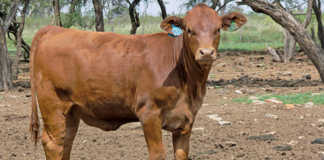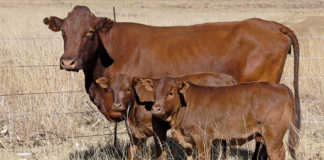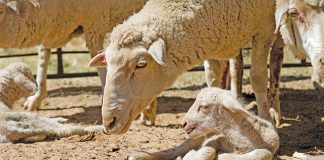Why do we castrate some bull calves?
- All bull calves that are not selected for breeding must be castrated.
- Castrated bulls (called steers or oxen) are sterile and can’t breed.
- They are calmer than bulls and need no special fences or handling equipment.
- They don’t have to be kept away from females and can be run in the same camp.
- They get fat faster than bulls and are ready to market or slaughter earlier.
When to castrate
- Castrate a bull calf at any age up to 12 months, but before two months is better.
- Although a bull calf grows better when not castrated, the shock of castration is greater for an older calf.
Castration methods
Four methods are used in South Africa. This week we’ll look at the Burdizzo method.
- The Burdizzo is a clamp that breaks the blood vessels leading into the testicles. Once the blood supply to the testicles is lost, the testicles shrink, soften and stop working.
- Castrate a bull calf when you can feel the spermatic cord (from about one month and older). The cord is a raised area near the top of the testicle.
- Castrate the bull calf when it is standing or lying down.
- Clip one spermatic cord at a time.
- Clip the two cords at different places to prevent infection.
- The process is bloodless and infection or maggot infestation seldom occurs. If you’ve never castrated an animal before, or have any questions, consult your vet or extension officer.
Source: Department of Agriculture, Forestry and Fisheries. For more information, contact the North West Agricultural Development Institute (Potchefstroom) on 018 299 6576.












